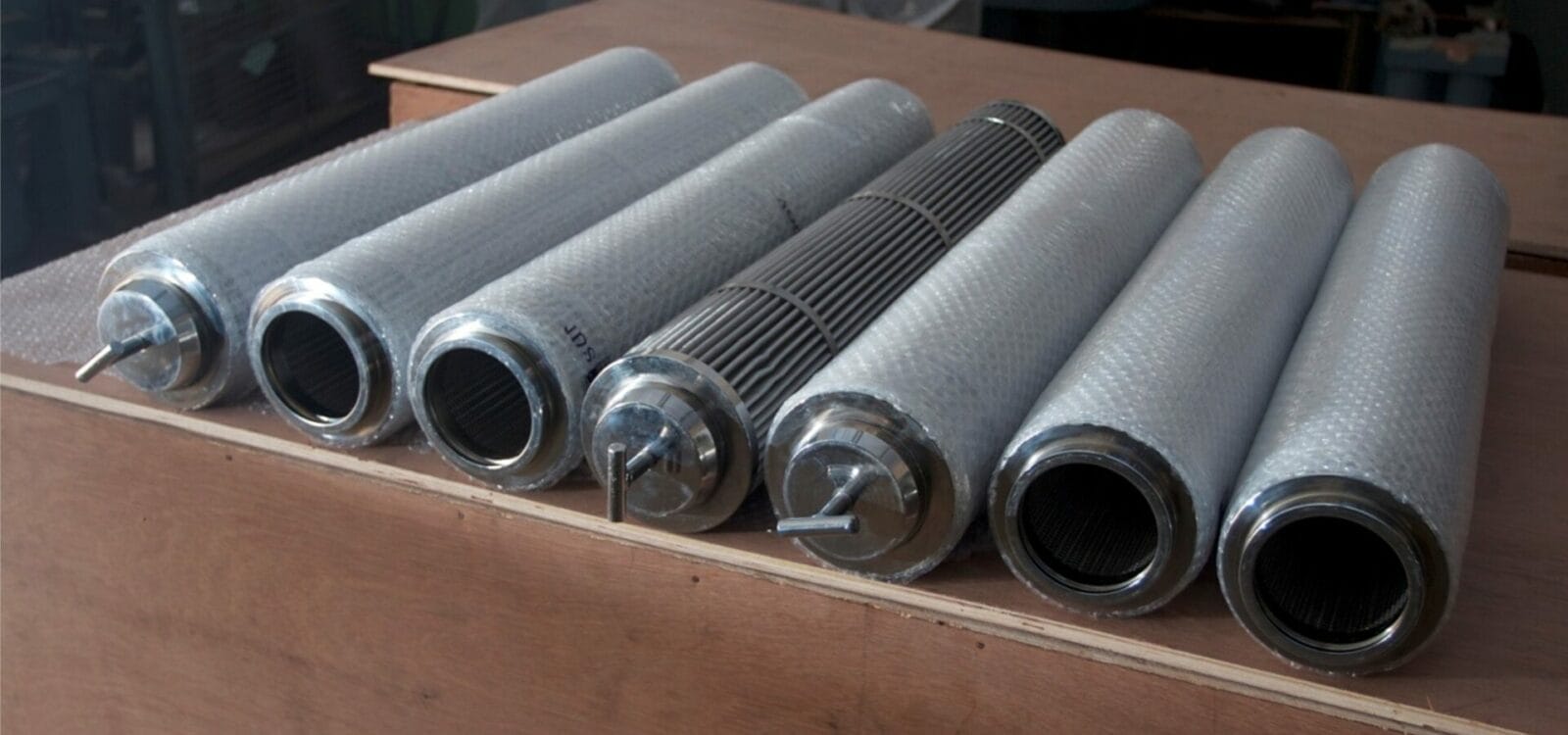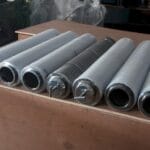What Are Coalescer Filters and How Do They Work?
In a gas turbine system, a coalescer filter operates as a specialized filtration device that is designed to remove liquid aerosols and fine particulates from gas streams. The purity of the fuel gas and the protection of sensitive turbine components are ensured with these filters. The contaminated gas passes through a multi-layered media where tiny liquid droplets—such as water or oil mist—are captured and merged into larger droplets. This process is known as coalescence. These larger droplets get heavy enough to separate and drain away from the system. This is how a fuel gas coalescer filter operates.
A well-designed gas coalescer filter such as the ones manufactured by Sungov Engineering, not only enhances the efficiency and longevity of the turbine but also help maintain optimal combustion. This is achieved by delivering cleaner gas to the combustion chamber. By preventing contaminants from reaching critical components, coalescer filters play a significant part in the reliability and performance of modern gas turbines.
The Role of Coalescer Filters in Gas Turbine Systems
In a gas turbine system, the goal of a coalescer filter is to maintain fuel efficiency, quality and most importantly protect your turbine’s internal components from damage that are caused by contaminants. For the process of efficient combustion, gas turbines rely on dry and clean fuel. This is because the presence of liquids such as water or hydrocarbons brings forth fouling, corrosion and reduced performance. A fuel gas coalescer filter is designed specifically to remove these unwanted liquids and fine aerosols from the fuel stream before it can enter the combustion chamber. When the gas coalescer filter separates out these contaminants it ensures that the turbine operates under optimal conditions, reduces maintenance frequency, improves thermal efficiency and extends equipment life. This indicates that the coalescer filters are an essential part of fuel conditioning process in high-performance gas turbine applications.
The Physics of Coalescence: Surface Tension, Diffusion, and Flow Dynamics
When you understand the physics of coalescence, you will understand the science behind how a coalescer filter works. The science is simple – it involves the merging of small liquid droplets into larger ones. Key principles such as surface tension, diffusion, and flow dynamics drive this process. In a fuel gas coalescer filter, surface tension causes fine liquid aerosols—like water or oil mist suspended in the gas stream—to adhere to the fibers of the filter media. As more and more droplets accumulate, they diffuse and interact under low-velocity conditions, combining into larger, heavier droplets.
Flow dynamics also play a crucial role: the carefully engineered design of a gas coalescer filter ensures a laminar flow regime that promotes effective droplet coalescence and minimizes re-entrainment. When the droplets are large enough, gravity or centrifugal forces help separate the droplets from the gas stream. Understanding these physical mechanisms highlights why coalescer filters are so effective at protecting gas turbines from moisture-related damage and performance loss.
The Types of Contaminants Removed by Coalescer Filters in Gas Turbines

Coalescer filters in gas turbine systems are engineered to eliminate a wide range of contaminants that can compromise turbine performance and reliability. A properly functioning fuel gas coalescer filter or gas coalescer filter ensures that only clean, dry gas reaches the combustion chamber. Here are the primary types of contaminants these filters remove:
Water Aerosols: Tiny water droplets suspended in the gas stream that can cause corrosion and combustion instability.
Hydrocarbon Mists: Fine droplets of oil or liquid hydrocarbons that can lead to fouling of turbine components and reduced efficiency.
Particulate Matter: Solid particles such as dust, rust, scale, or dirt that can erode internal turbine parts and clog downstream equipment.
Compressor Lube Oil Carryover: Traces of lubricant from upstream compressors that may enter the gas line and damage combustion systems.
Acidic Liquids and Chemicals: In some environments, acidic moisture or chemical vapors can form, which coalescer filters help remove to protect turbine internals.
Coalescer Filter Design Considerations for High-Pressure Applications
When designing a coalescer filter for high-pressure gas turbine applications, it is important to pay careful attention to materials, structural integrity, and filtration performance. In such environments, a fuel gas coalescer filter must be able to withstand elevated operating pressures while maintaining its ability to effectively separate fine liquid aerosols and particulates.
One key design consideration is the selection of robust filter media—typically made from high-strength synthetic fibers or layered glass microfibers—that can handle both pressure and chemical compatibility. The housing of the gas coalescer filter must also be engineered to resist deformation, fatigue, and corrosion over prolonged use. Another critical factor is managing pressure drop even at high flow rates, the filter must maintain low resistance to ensure that the fuel delivery is not compromised. In addition to this, the coalescers for high-pressure systems often incorporate multi-stage separation elements—such as pre-filters and secondary separators—to enhance efficiency. The right coalescer filter design ensures reliable operation, safety, and maximum protection for turbines running in high-demand, high-pressure applications.
Monitoring and Maintenance of Coalescer Filters in Turbine Operations
It is very important to effectively monitor and maintain a coalescer filter in a gas turbine operation. These filters are essential for consistent performance. With time, a fuel gas coalescer filter can become saturated with liquid contaminants and particulates. This can lead to increased pressure drop and reduced filtration efficiency. Regular inspection of differential pressure across the gas coalescer filter is a key indicator of its condition. Rising pressure typically signals the need for replacement or cleaning.
Maintenance schedules should also consider operating conditions, fuel quality, and manufacturer recommendations. In high-pressure systems, it’s important to use properly rated filter elements and ensure that seals and housings remain intact to prevent leaks or bypass. If maintenance is neglected it can lead to contaminated fuel reaching the combustion chamber. This can result in corrosion, fouling, and performance degradation. By implementing a proactive maintenance strategy, operators can extend filter life, avoid unplanned shutdowns, and ensure that the gas turbine runs at peak efficiency.
If you want to know how Coalescer filters can work in your gas turbine, get in touch with us.



